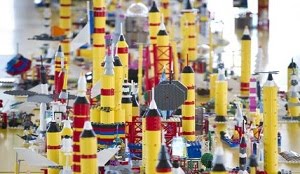
In recent months, the new administration has been prodding NASA to study how current space technology might be utilized to put more humans into space. President Obama recommended that NASA form a committee to evaluate these possibilities, including commercial space flight, and deliver a report to his administration within 180 days. The committee that resulted held its first public meeting on Wednesday to discuss this issue.
On May 7, 2009, John Holdren, the Director of the Office of Science and Technology Policy, sent a letter to Christopher Scolese, NASA's Acting Administrator, on behalf of the US government and President Obama in particular. Holdren extolled the importance of examining the state of humans in space, or lack thereof. He also pointed out that much time has passed since this issue had been evaluated, especially relative to the pace of technological developments, and recommended that NASA form a committee to assess the potential for future human space flight.
In response, the US Human Space Flight Committee was formed, composed of persons such as Norman Augustine, the CEO of Lockheed Martin; Dr. Leroy Chiao, a former International Space Station commander; and Dr. Sally Ride, the first woman the US put in space.
The committee's statement of task charged it with identifying the sort of human space flight architecture that would allow US support of the International Space Station and missions to the Moon and further destinations. They also need to consider if and how that architecture would allow for commercial space flight. More generally, the committee is expected to be an advocate for technologies that are innovative and inspiring to younger generations. There's also hope that this will encourage international competition (hopefully the friendly kind) and have a positive impact on the nation's work force and industrial base.
The committee held its first public meeting on Wednesday in Washington, D.C., which was broadcast on NASA's website. At the meeting, the committee's members presented various methods of launching spacecraft, and reported the status of some commercial programs, such as those from SpaceX and Orbital. There were also two half-hour periods for public comment.
In addition to broadcasting the public meetings (three more of those will take place in Huntsville, AL, Cape Canaveral, FL, and again in Washington, D.C.), the committee is using Web 2.0 tools to keep the public updated and involved, including Twitter, Flickr, online polls, and RSS feeds. One of the committee's members, Dr. Chiao, is maintaining his own related Twitter. They have also dedicate a page on their site for user-submitted questions, to ensure that any reasonable submissions will receive answers.
A significant part of the Committee's job will be to suggest how these plans might fit into the NASA budget, which will be $3.96 billion in 2010, but is scheduled to rise to $6.27 billion by 2014. The budget will cover the development of a craft dedicated to human space flight, robotic support technology, and R&D spending.
Once the various options have been assessed through meetings and site visits and deemed affordable as well as sustainable, the committee is to submit a report to the Obama administration with their recommendations and strategies to foster human activity in space. The final report, like the rest of the process, will also be available to the public.




0 comments:
Post a Comment